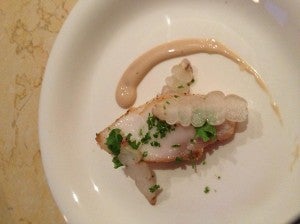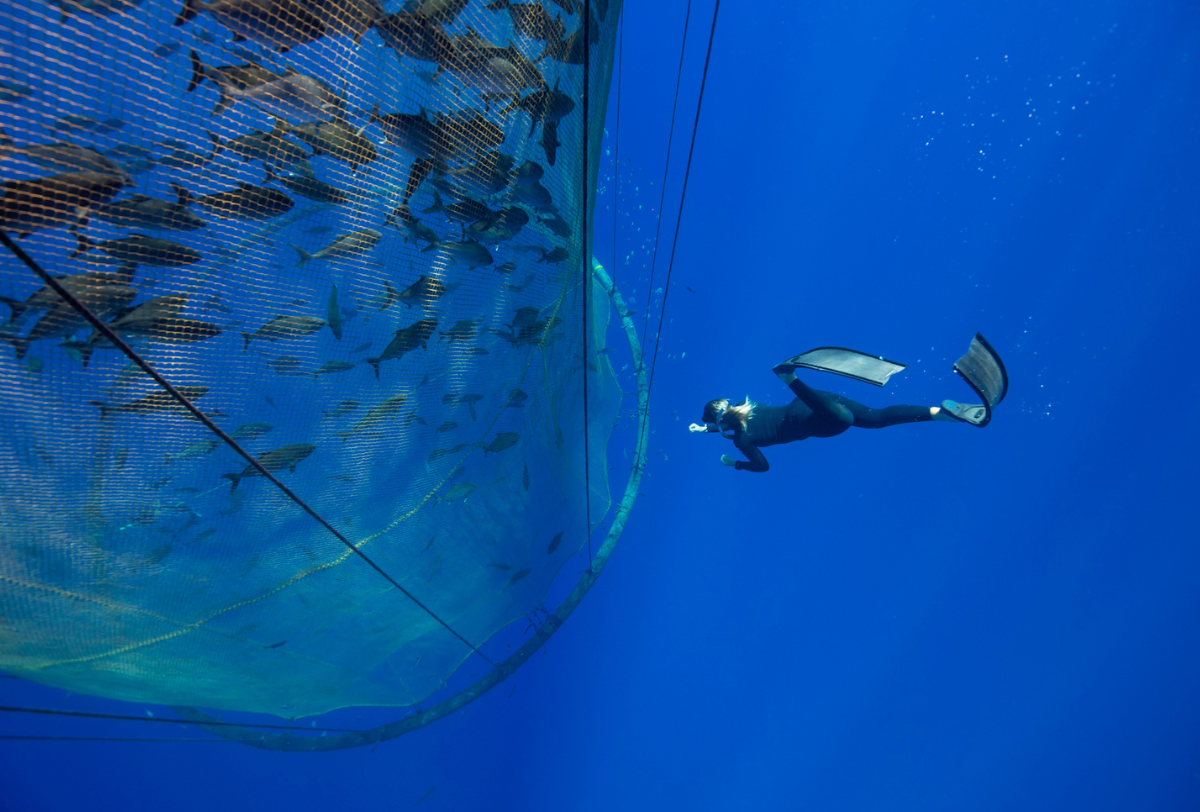‘Fish on Fridays’: Pacific Sablefish

During this season of Lent, we know people are shopping for seafood more frequently and we wanted to help guide sustainable seafood purchases, because buying fish that is caught responsibly is important to consumers. With more reports of seafood mis-labeling, and conflicting sustainability standards, we hope that this series will help consumers choose fish that is local, fresh, and guaranteed to be caught sustainably.
Knowing where your seafood comes from can help support local fishermen who work hard to supply us with the seafood that we all love.
This week, we are featuring Pacific Sablefish (also known as black cod) which is managed under the Pacific Groundfish Individual Fishing Quota (IFQ) Program. We are also presenting a tasty recipe from Chef Kerry Heffernan: Sable with Pickled Jerusalem Artichokes and Sherry Vinaigrette.
Meet a fisherman: Captain Steve Fitz
Captain Steve Fitz grew up fishing with his father in New England before moving west and graduating from the University of Denver with a degree in business. About eighteen years ago, he moved out to Half Moon Bay, California, to fish with his uncle, eventually becoming the captain of the fishing vessel Mr. Morgan in 2000. Steve and his family are the only commercial fishing operation in the United States that uses Scottish Seine gear, a selective and eco-friendly way to catch groundfish. Mr. Morgan Fisheries specializes in sustainably harvested groundfish and Dungeness crab.
The Pacific IFQ Groundfishery:
Fishermen and fishing communities in California, Washington and Oregon have been operating under the IFQ system for 60 commercially important species of groundfish since 2011. In the first year of this program, West Coast fishermen discarded 80% fewer fish than in the previous year, and their revenues reached $54 million—42% higher than the previous five-year average (2011 NOAA Report).
Environmental Defense Fund has worked for years alongside fishermen, fishery managers and leaders at NOAA Fisheries to develop solutions that reduce costs for the trawl fleet while maintaining critical program components like 100% catch monitoring. The West Coast IFQ fishery is the most accountable fishery in the contiguous United States today. accountability. A new seafood label developed by EDF and Central Coast Seafood in California recognizes the commitment of the West Coast groundfish fleet to full accountability. The label, which reads “100% Federal At-Sea Monitoring: No Overfishing – Guaranteed”, distinguishes 100% monitored products. This label recognizes the commitment that West Coast fishermen have made to sustainable fishing, and gives consumers the ability to choose a catch share fish over a less sustainable product. Currently, a grocery store can’t distinguish catch share-caught sole, cod, sablefish, or other groundfish from fish from less well-regulated fisheries. The new label gives vendors, restaurants, and individuals the power to vote for catch shares and accountability, by purchasing 100% monitored products.
Sablefish:
Sablefish is also known as black cod and butterfish. It is found only in the Pacific and has a rich buttery flesh. Here is a delicious recipe from acclaimed Chef Kerry Heffernan for sablefish, prepared with pickled Jerusalem Artichokes and Sherry vinaigrette.
Sable with pickled Jerusalem artichokes and sherry vinaigrette
Cut sablefish in strips and sear (see picture).
Sherry Vinaigrette:
1 bottle Tio Pepe or other “bone dry” Amontillado sherry
1 bottle aged sherry vinegar
2 shallots finely minced
3 T Dijon mustard
3 egg yolks
2 cups grapeseed oil
1) Reduce 3/4 of the sherry and 3/4 of the sherry vinegar to 2/3 cup
2) Place 1/4 C sherry vinegar, 2 T Sherry (unreduced), reduced sherry vinegar/sherry mixture, mustard and shallots in blender. Season well with salt and pepper, blend for 20 seconds. While still blending, add grapeseed oil slowly in a stream so as to emulsify well until consistency of heavy cream is achieved. Check seasoning and add more vinegar, salt, pepper, and even raw sherry to taste.
Jerusalem Artichoke Pickle:
3 lbs Jerusalem artichokes, very well scrubbed and sliced thinly on mandolin
2 large white onions, very finely julienned
8 cloves garlic, peeled and thinly sliced
3 T Grapeseed oil
1/2 cup champagne vinegar
1/4 cup sugar
1/3 cup coriander seed (toasted whole first)
2 each fresh bay leaves
12 each cardamom pods (toasted whole first)
1/4 cup whole Black peppercorns (toasted first )
1) Place coriander, black peppercorns, bay leaves and cardamom in cheesecloth, make a “sachet” or pouch, and tie tightly.
2) In a heavy bottomed pot large enough to hold everything, begin sweating onions in grapeseed oil slowly for 2 to 3 minutes, seasoning with 5T kosher salt; add garlic and sachet and sweat 1 minute. Add Jerusalem artichokes, sugar and vinegar, cover with water, and bring to a simmer. Check seasoning and adjust. Simmer gently until tender but not at all breaking up. Allow to cool in its own liquid.












